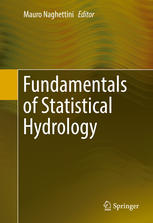

Most ebook files are in PDF format, so you can easily read them using various software such as Foxit Reader or directly on the Google Chrome browser.
Some ebook files are released by publishers in other formats such as .awz, .mobi, .epub, .fb2, etc. You may need to install specific software to read these formats on mobile/PC, such as Calibre.
Please read the tutorial at this link: https://ebookbell.com/faq
We offer FREE conversion to the popular formats you request; however, this may take some time. Therefore, right after payment, please email us, and we will try to provide the service as quickly as possible.
For some exceptional file formats or broken links (if any), please refrain from opening any disputes. Instead, email us first, and we will try to assist within a maximum of 6 hours.
EbookBell Team

0.0
0 reviewsThis textbook covers the main applications of statistical methods in hydrology. It is written for upper undergraduate and graduate students but can be used as a helpful guide for hydrologists, geographers, meteorologists and engineers. The book is very useful for teaching, as it covers the main topics of the subject and contains many worked out examples and proposed exercises. Starting from simple notions of the essential graphical examination of hydrological data, the book gives a complete account of the role that probability considerations must play during modelling, diagnosis of model fit, prediction and evaluating the uncertainty in model predictions, including the essence of Bayesian application in hydrology and statistical methods under nonstationarity.
The book also offers a comprehensive and useful discussion on subjective topics, such as the selection of probability distributions suitable for hydrological variables. On a practical level, it explains MS Excel charting and computing capabilities, demonstrates the use of Winbugs free software to solve Monte Carlo Markov Chain (MCMC) simulations, and gives examples of free R code to solve nonstationary models with nonlinear link functions with climate covariates.